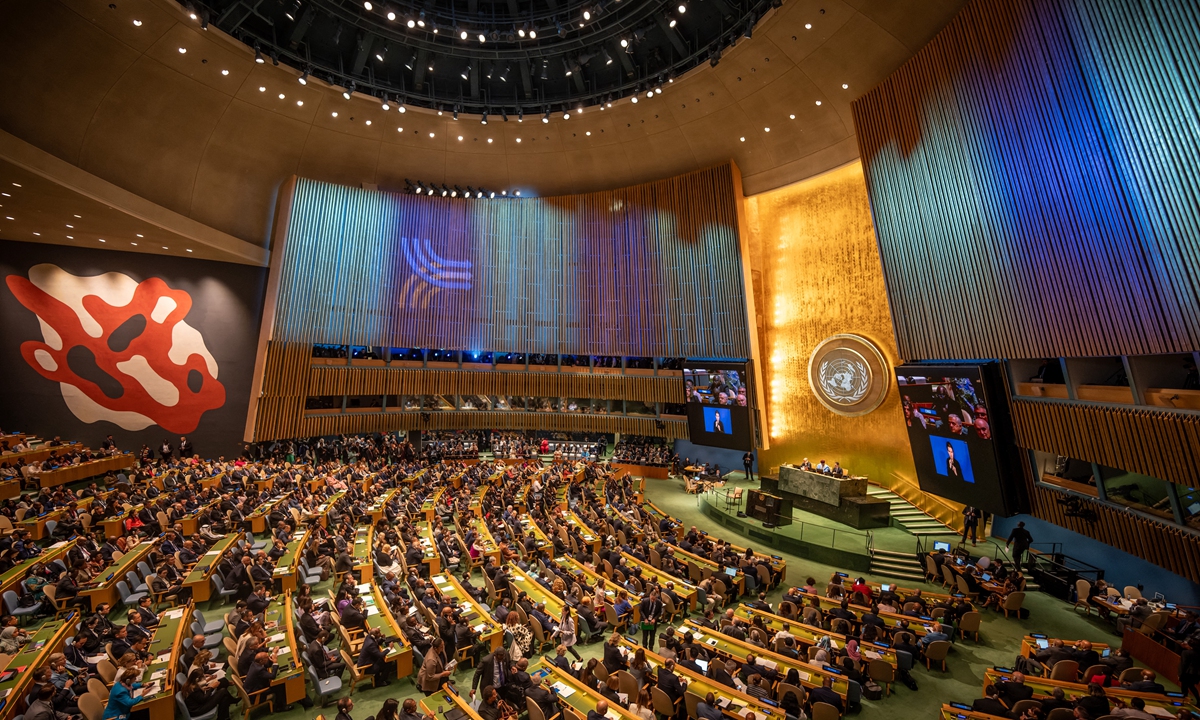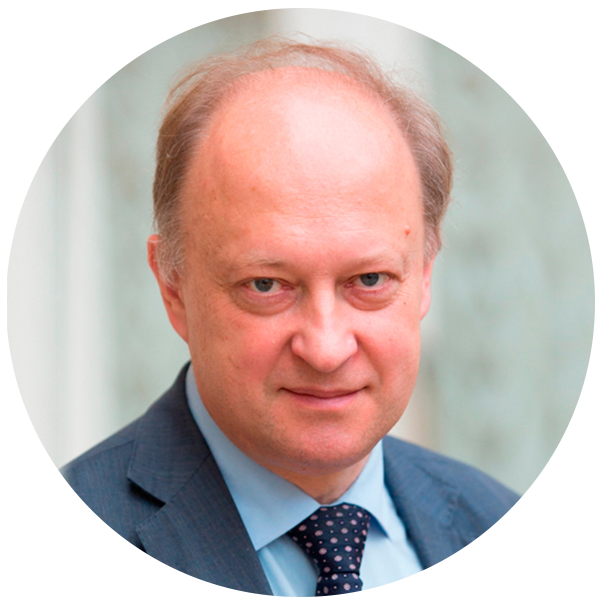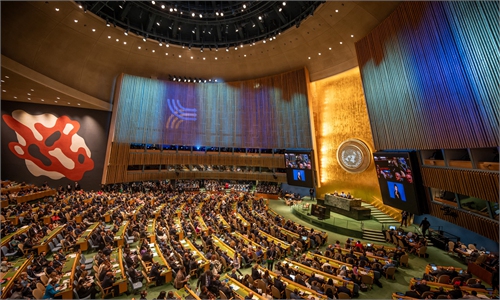UN Summit of the Future: from a sketch to a picture

The delegates are taking part in the UN Summit of the Future in New York, the US, on September 22, 2024. Photo: AFP
Large-scale high-level events at the United Nations (UN) seldom generate immediate practical results dramatically shifting the course of international relations. As a rule, the result of such events, which take a lot of time and energy to put together, are very general and legally non-binding statements, short-term media splashes and criticism from frustrated experts and analysts looking for something more radical or more practical. Yet, these events remain important - they serve as political barometers indicating the ongoing changes in the predominant concerns, ambitions and priorities within the international community. With any luck, they can also become long-awaited catalysts for badly needed change within the international system.The UN Summit of the Future that took place in New York on September 22-23 was no exception to this general rule. It clearly reflected rapidly shifting global security and development agendas, as well as new challenges and opportunities for multilateral cooperation on a broad range of fundamental issues the humankind has to confront in our turbulent times. UN Secretary-General Antonio Guterres, the main driving force behind the Summit, urged member-states to demonstrate "vision" and "courage," calling for "maximum ambition" to strengthen international institutions, which struggle to respond effectively to today's and tomorrow's threats. There is no time for further procrastinators; suffice to say, to date, only 17 percent of the 2015-2030 global Sustainable Development Goals (SDG) are on track.
Nobody at the meeting in New York questioned in principle the urgent need to democratize the international system by giving a more powerful voice to developing nations. The outcome of the summit, Pact for the Future, outlines 56 "actions," including a continuous commitment to multilateralism, upholding the UN Charter and peacekeeping. It appropriately calls for reforms to international financial institutions and the UN Security Council, along with renewed efforts to combat climate change, promote disarmament and guide the development of artificial intelligence.
Who in his or her right mind would object to these noble and timely goals? These goals are commendable, yet seem a bit vague. For instance, critics could argue that none of the documents adopted at the Summit directly addressed the issue of specific financial commitments regarding the green transition or a particular role that the UN should play in reforming international financial institutions.
The odds are that deep disagreements on the central points of the global development and security agendas will not disappear in the foreseeable future. There are many reasons for nations to stick to their current positions beyond the regretful inertia of the old political thinking or the vicious logic of the ongoing geopolitical confrontation.
The complex issues facing the modern world are not simply the result of misunderstandings or communication breakdowns. The challenges are too deep-rooted to be resolved merely by bringing together leaders for diplomatic discussions. While dialogue is important, the problems require more substantive solutions beyond just conversation. They are often rooted in real divergences of national interests and in the very nature of the forthcoming international transition that will inevitably be more painful and more costly for some nations than it will be for others.
The international community has to continue its search not for an elusive general consensus on the desirable world order, but rather for attainable compromises on specific matters. Such compromises will not be ideal or not always sustainable over long periods of time and inevitably they will be vulnerable to criticism. However, a tactical compromise that is less than perfect on practical problems is much better than a continuous uncompromising fight around matters of principle.
The Summit of the Future, with all the reservations one might have about its specific outputs and outcomes, can be an important step in the right direction. Provided, of course, that the Summit will be followed by a whole trail of problem-focused events addressing each of the 56 "actions" in much more detail. In other words, it's high time to start gradually moving from an initial rough sketch to a carefully drawn picture, even if completing the drawing will turn out to be a long process.
The author is academic director of the Russian International Affairs Council. opinion@globaltimes.com.cn


